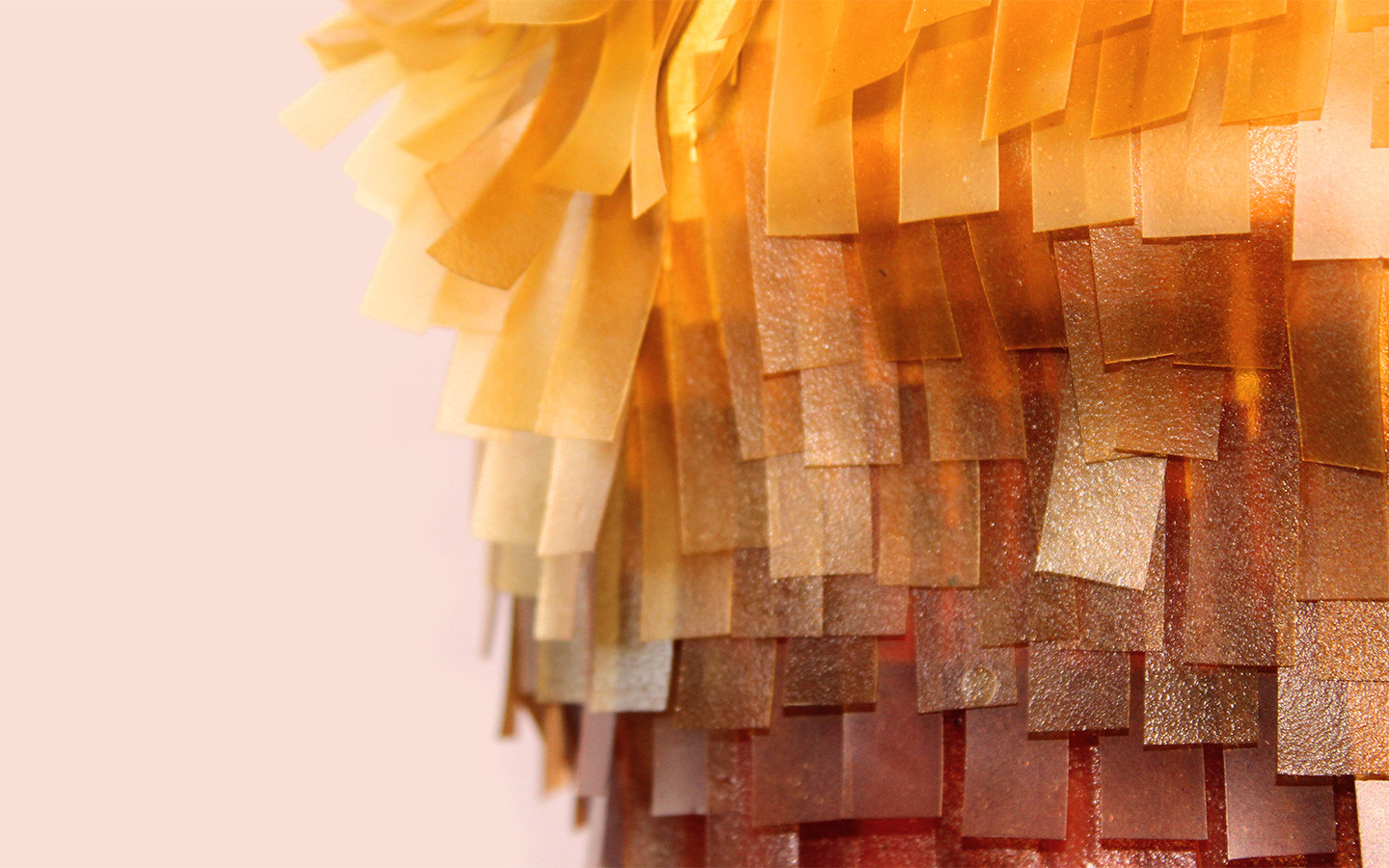
The Golden Phoenix
"The golden phoenix" is in the sky - a dress made of algae sequins applied to peace silk and dyed with natural residues from the food industry. This could be a revolution in the fashion industry! This is the first project of the Green Product Club. Curated by the award network, teams of designers and material researchers work together to develop prototype new solutions for industry.
The project called "The Golden Phoenix" is a reference to the 20s - wild, sexy, brave and exactly 100 years later above all: sustainable!
Background: Exactly 100 years ago the world danced on the abyss, at that time economically and politically. Today there is the ecological component. The first project of the Green Product Club is dedicated to the fashion industry on the occasion of this birthday. The fashion industry produces 20 percent of global wastewater and 10 percent of global carbon emissions - more than all international flights and ocean shipping combined. Textile dyeing is the second largest water polluter worldwide, so around 7,500 liters of water are required to produce a typical pair of jeans. Source: United Nations Environment Program.
Nils Bader, Initiator of Awards & Club “With the club projects we want to set an impulse that shows that sustainable design processes can change the production and consumption of entire industries. Further projects for other industries are in preparation.”
Nikolett Madai, winner of the Green Concept Award 2019 and Carolyn Raff, who participated in the Green Concept Award Selection 2020 with her material experiment "An Ocean full of opportunities", were involved in the "Golden Phoenix" project.
Carolyn Raff uses the red algae (lastaxanthin) as the basis for first obtaining a nutrient solution, which is subsequently transformed into bio-based sequins. After drying and shaping, sequins were created. The color of the material arises from the addition of already used dye baths from industrial dyeing, which are disposed of after the dyed fabrics have been saturated, although they can certainly dye other fabrics.
At the “Golden Phoenix”, those involved went one step further. Nikolett Madai, Master in Sustainability & Fashion, applied her “grave-to-cradle” method, which uses residues from beverage production from turmeric and pomegranate to extract sustainable color pigments. These were initially used to give the silk * a natural, golden color that can otherwise only be achieved with chemical agents. The dress is lightfast and additionally anti-inflammatory due to the turmeric! The pigment bath was then used to color the algae.
The silk used is made according to the Peace-Silk principle, which includes. No use of chemicals in caterpillar breeding and, above all, that cocoon processing only begins after the butterflies hatch -> silk without cruelty to animals!
The Phoenix will land next time at the award exhibition in Munich and will be presented to the 110,000 visitors.
>> More about the exhibition and program